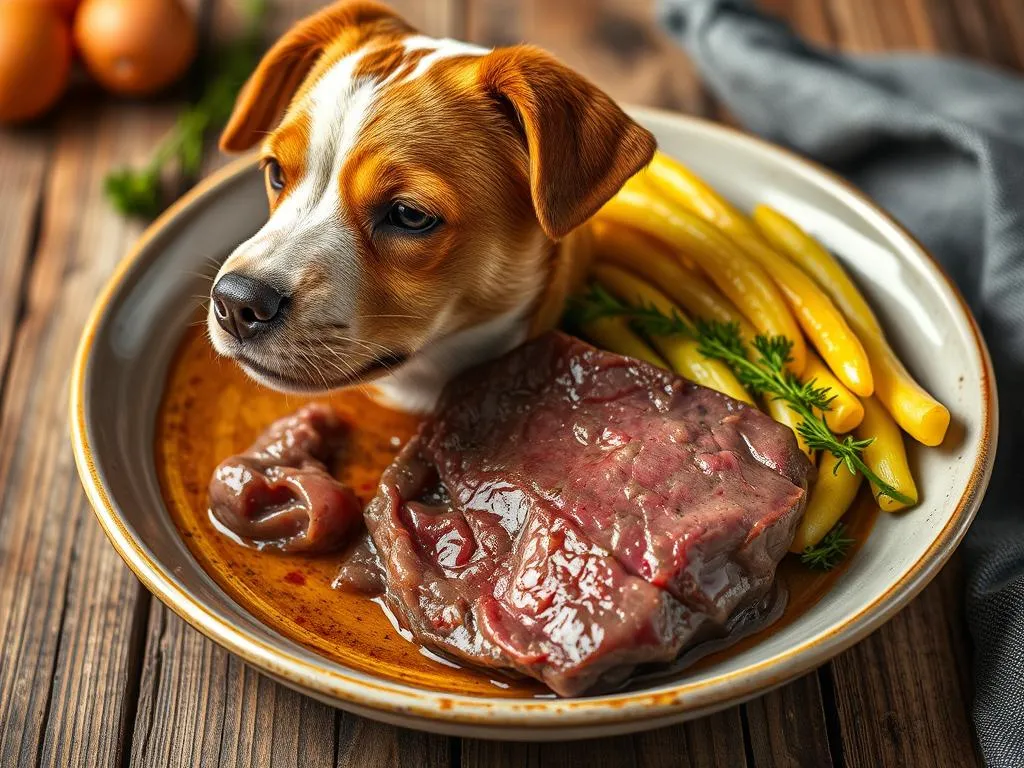
Introduction
Nutrition plays a vital role in the overall health and well-being of dogs. Just like humans, dogs require a balanced diet that meets their specific dietary needs. A well-rounded dog diet consists of proteins, fats, carbohydrates, vitamins, and minerals. Among the many food options available, organ meats, particularly beef liver, stand out as a powerhouse of nutrition for our canine companions. This blog post will delve into the significance of beef liver in dog nutrition and provide practical methods on how to cook beef liver for dogs.
Understanding Dog Nutrition
Essential Nutrients for Dogs
Dogs require a variety of nutrients to thrive. These include:
- Proteins: Essential for growth, repair, and maintenance of tissues.
- Fats: Provide energy and support cell structure.
- Carbohydrates: Source of energy and aid in digestion.
- Vitamins and Minerals: Crucial for metabolic processes and overall health.
Ensuring that your dog receives a balanced intake of these nutrients is key to promoting their health and longevity.
The Role of Organ Meats in Dog Diets
Organ meats, including beef liver, are often referred to as “superfoods” in canine nutrition. They are nutrient-dense and provide a variety of essential vitamins and minerals that muscle meats alone may lack. Organ meats can enhance your dog’s diet by supplying:
- Higher concentrations of vitamins A, B vitamins (especially B12), and iron.
- Unique nutrients like CoQ10 and other antioxidants.
In comparison to muscle meats, organ meats are often richer in vital nutrients, making them an important addition to your dog’s diet.
Benefits of Beef Liver for Dogs
Nutritional Profile of Beef Liver
Beef liver is an exceptional source of nutrition for dogs. It is loaded with:
- Vitamin A: Essential for vision, skin health, and immune function.
- Vitamin B12: Supports the nervous system and aids in the formation of red blood cells.
- Iron: Vital for oxygen transport in the blood and overall energy levels.
- Folate: Important for cell division and growth.
Health Benefits
Incorporating beef liver into your dog’s diet can yield numerous health benefits:
- Supports Immune Function: The high levels of vitamins A and C help bolster your dog’s immune system.
- Promotes Healthy Skin and Coat: Essential fatty acids and vitamins improve skin health, leading to a shiny coat.
- Aids in Energy Production: Nutrients found in beef liver help in energy metabolism, keeping your dog active and vibrant.
Cautions and Considerations
While beef liver is highly nutritious, moderation is key.
- Recommended Serving Size: Generally, liver should make up no more than 5-10% of your dog’s total diet.
- Potential Risks of Overfeeding: Excessive consumption of liver can lead to vitamin A toxicity, resulting in symptoms like bone deformities or liver damage.
Preparing Beef Liver for Dogs
Choosing Quality Beef Liver
When preparing beef liver for your dog, selecting high-quality liver is crucial. Here are some tips:
- Freshness: Look for bright red color and avoid any that appears brown or has an off smell.
- Source: Choose liver from reputable suppliers, preferably organic or grass-fed options to ensure quality and reduce exposure to toxins.
Basic Preparation Steps
Before cooking, proper preparation of beef liver is essential:
- Cleaning: Rinse the liver under cold water to remove any impurities.
- Trimming: Remove any connective tissue or membranes that you may find unappealing.
- Cutting: Cut the liver into small, bite-sized pieces suitable for your dog’s size.
Cooking Methods for Beef Liver
Cooking liver properly not only enhances its flavor but also ensures it’s safe for your dog to consume. Here are several methods to cook beef liver for dogs.
Boiling Beef Liver
Boiling is one of the simplest methods:
- Place the cleaned liver in a pot of water.
- Bring to a boil, then reduce to a simmer.
- Cook for about 10-15 minutes until the liver is firm and cooked through.
- Let it cool before cutting it into pieces.
Baking Beef Liver
Baking is another healthy option:
- Preheat your oven to 350°F (175°C).
- Place the liver on a baking sheet lined with parchment paper.
- Bake for 15-20 minutes or until cooked through, flipping halfway to ensure even cooking.
- Allow to cool before serving.
Frying Beef Liver
If you prefer frying, consider these healthier options:
- Use a non-stick skillet or a small amount of healthy oil like coconut or olive oil.
- Heat the skillet over medium-low heat.
- Cook the liver for about 3-4 minutes on each side until browned and cooked through.
- Avoid overcooking to prevent a tough texture.
Dehydrating Beef Liver
Dehydrated liver makes a fantastic treat:
- Slice the liver into thin pieces.
- Place them in a dehydrator or on a baking sheet in the oven at the lowest temperature (around 160°F or 70°C).
- Dehydrate for 6-8 hours until completely dried and crispy.
- Store in an airtight container for a nutritious snack.
Serving Beef Liver to Dogs
How to Introduce Liver into Your Dog’s Diet
When adding liver to your dog’s diet, it’s important to introduce it gradually:
- Start with small amounts and monitor your dog for any adverse reactions.
- Increase the portion over time as long as your dog tolerates it well.
Serving Suggestions
There are various ways to serve beef liver:
- Mixing with Regular Dog Food: Chop cooked liver into small pieces and mix it into their regular meals for added nutrition.
- Using as a Training Treat: Cut liver into tiny morsels for a high-value reward during training sessions.
Storage Tips
Proper storage is essential to maintain freshness:
- Refrigeration: Store cooked liver in an airtight container in the fridge for up to three days.
- Freezing Options: For long-term storage, freeze individual pieces or small portions in a freezer-safe bag. This allows you to thaw as needed.
Common Questions and Concerns
Can All Dogs Eat Beef Liver?
While most dogs can enjoy beef liver, certain considerations apply:
- Puppies: Introduce liver cautiously, given their sensitive digestive systems.
- Senior Dogs: Monitor serving sizes as older dogs may have different nutritional needs.
- Health Conditions: Consult with your veterinarian if your dog has liver issues or specific dietary restrictions.
What If My Dog Doesn’t Like Liver?
If your dog shows disinterest in liver, consider these alternatives:
- Alternative Organ Meats: Options like chicken hearts or kidney can provide similar nutritional benefits.
- Encouraging Picky Eaters: Mix liver with other foods or try different cooking methods to enhance its appeal.
Signs of Overconsumption
Be aware of the symptoms indicating your dog may be consuming too much liver:
- Vomiting or Diarrhea: Indicates digestive upset.
- Lethargy: Excessive consumption can lead to sluggishness.
- Signs of Vitamin A Toxicity: Look out for symptoms like loss of appetite, weight loss, and bone deformities.
Conclusion
Incorporating beef liver into your dog’s diet can offer numerous nutritional advantages and contribute to their overall health. Its rich profile of vitamins and minerals makes it a worthy addition to any canine meal plan.
Experimenting with various cooking methods not only keeps meals exciting for your dog but also allows you to provide them with a diverse diet. Encouraging a variety of foods ensures that your dog receives a well-rounded nutrition, enhancing their vitality and well-being.
Consider sharing your experiences with cooking liver for your dog and how it has impacted their health. Engaging with fellow pet owners can foster a supportive community centered around the best practices in dog nutrition.









